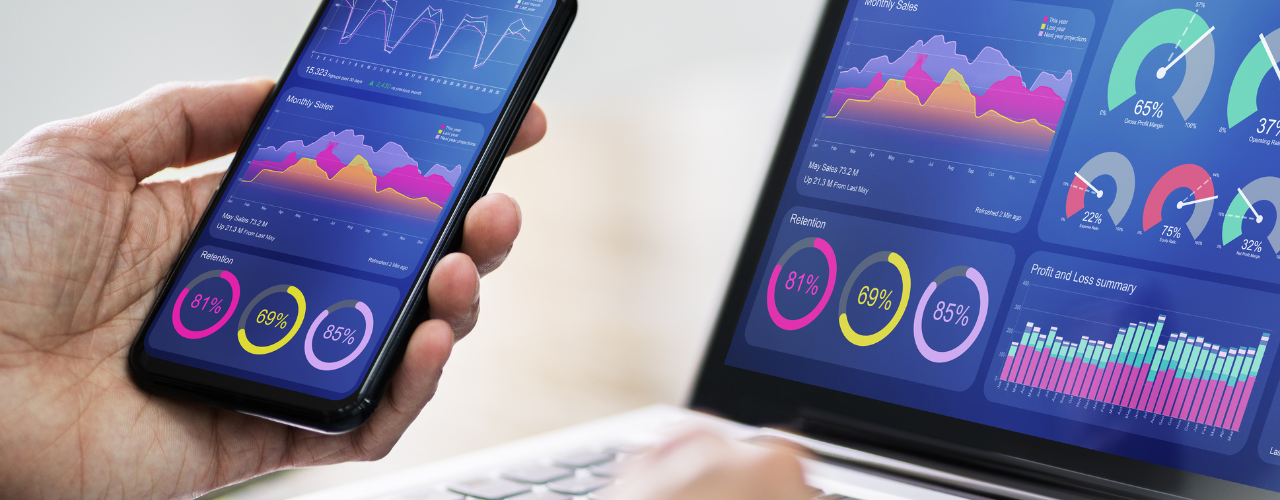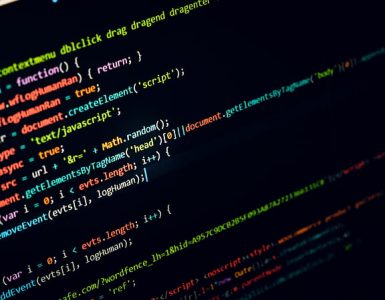We live in a data driven world, to provide context 328.77 billion Gigabytes of data is generated everyday. With that much data at our disposal it’s now becoming more important than ever to leverage this data to make better business decisions, run better marketing campaigns, detect fraud early, identify health issues early. These are just a few of the numerous use cases.
Put simply, predictive analytics helps at answering the question, “What might happen next?” Predictive analytics is the process of using data, statistical algorithms and machine learning techniques to leverage historical and current data to predict future events.
With increase in the available data to draw insights from there has been a clear rise in the interest in predictive analytics as indicated by Google trends.

It is no surprise that the rise in popularity and success of predictive analytics has coincided with the growth of big data systems, which allow for larger and more diverse data sets to be analyzed in order to gain predictive insights. This area of data science has been further empowered by advancements in big data machine learning, which have expanded the range and accuracy of predictive analytics.
As businesses seek to make data-driven decisions, the use of predictive analytics has become increasingly important for leveraging data to identify trends and make predictions about future outcomes.
How does Predictive Analytics Work ?
Now that we have an understanding of what predictive analytics is, let’s look at how predictive analytics works and a generalized framework for building a workflow for predictive analytics.
The image below shows the 5 steps involved in the process of a predictive analytics workflow, let us understand each one in detail.

Define The Problem
The first step is to define the problem that we want to solve using predictive analysis. Do we want to predict the inventory levels for Black Friday or Big Billion Day sales ? Do we want to model credit card fraud ? Do we want to predict the failure of heavy machinery used in a manufacturing plant ?
Defining a clear problem which we want to solve will help in deciding the predictive analytics method to be applied.
Gather & Clean Data
The rise in the amount of data that is available has also resulted in the problem of data quality. More data doesn’t necessarily mean the available data is meaningful and the basic rule of machine learning is ‘Garbage In Garbage Out’.
Hence, it’s important to identify good data sources, set up consistent and reliable data pipelines and work closely with business stakeholders to understand and clean the data. Clean data involves removing anomalies, removing or substituting missing values and identifying outliers and other similar techniques.
Explore The Data
Once cleaned, the data is then ready to be looked into for meaningful patterns and insights. Techniques such as data visualization and descriptive statistics greatly help in understanding the data and the patterns it holds.
Build The Predictive Model
With a good understanding of the data, the next step for data scientists is to build a good predictive model. This involves selecting an appropriate algorithm and training it on the historical data. Variety of machine learning algorithms such as classifiers, regression models and decision trees are available at the disposal of data scientists to build a good predictive model.
Validate Results & Deploy Model
The last step in the workflow is to check the accuracy of the developed model, validate its results and once satisfactory results are achieved, deploy the model and make it available to business stakeholders either via a web app or dashboards,
Examples Of Predictive Analytics Techniques
Predictive analytics models can be classified into two types, classifiers and regression models. Classifiers aim at putting the data in one category or another, for example to decide which offer to send to which customer. Regression models work on continuous data, for example to understand revenue per customer or revenue by store and so on.
Regression Analysis
Regression analysis is a statistical technique used to analyze the relationship between two or more variables. It is often used to estimate the relationship between a dependent variable and one or more independent variables. Regression models can be linear or nonlinear and can be used for both simple and complex datasets.
Decision Trees
A decision tree is a graphical representation of a decision-making process. It is used to identify the best course of action based on a set of input variables. The tree is constructed by dividing the data into smaller and smaller subsets, each of which is associated with a decision or outcome. The tree is then used to predict the outcome for new data based on the input variables.
Neural Networks
Neural networks are a type of machine learning algorithm inspired by the structure and function of the human brain. They are used to identify patterns in complex data sets. Neural networks consist of layers of interconnected nodes (or neurons) that process information and make predictions based on input data. They can be used for a wide range of applications, from image recognition to financial forecasting.
These are just a few examples of techniques that can be used in predictive analytics. The final decision and choice of model depends on the problem being solved and the data available.
Real World Applications Predictive Analytics Techniques
Predictive analytics in 2023 is no longer limited to the finance and marketing industry. It’s a technique being used by political parties to win elections, the healthcare industry to increase life expectancy and the manufacturing industry to establish better supply chains and ensure better operational environments.
Let’s now understand a few of the real-world applications discussed in detail
Election Campaign
Former US president Barack Obama was the first to use predictive analytics effectively to manage and win the election campaign. Project Narwhal, a computer program used by team Obama, made effective use of advanced data analytics to interact with voters on reddit, place ad campaigns and understand the attitude of voters.
Predictive Analytics in political campaigns finds its base in SBD (Social Big Data). It can be used for voter modeling and personalisation, spam and social influence prediction, content segmentation and classification, and voter engagement.
Marketing
Predictive analytics is commonly used in marketing to help businesses understand consumer behavior and optimize their marketing efforts. For example, a company might use predictive analytics to identify which customers are most likely to respond to a particular marketing campaign, allowing them to target their marketing efforts more effectively.
Human Resource
HR teams can leverage predictive analytics and employee surveys to match job applicants and increase engagement. This helps businesses save on recruitment costs and improve employee satisfaction, especially during volatile job markets and times of recession or when hiring competition is higher.
Healthcare
Predictive analytics is increasingly being used in healthcare to improve patient outcomes and reduce costs. For example, predictive analytics can be used to identify patients who are at high risk of developing a particular disease, allowing healthcare providers to take proactive measures to prevent the disease from developing or to treat it more effectively.
Financial Services
Predictive analytics is widely used in the financial services industry to identify and manage risk. For example, a bank might use predictive analytics to identify which customers are most likely to default on a loan, allowing them to take proactive measures to manage the risk.
Manufacturing
Predictive analytics is used in manufacturing to optimize production processes and reduce costs. For example, a manufacturing company might use predictive analytics to identify which parts of a production line are most likely to fail, allowing them to take proactive measures to prevent breakdowns and reduce downtime.
Transportation
Predictive analytics is increasingly being used in the transportation industry to improve safety and reduce costs. For example, a transportation company might use predictive analytics to identify which vehicles are most likely to require maintenance, allowing them to proactively schedule maintenance and reduce the risk of breakdowns.
Benefits Of Predictive Analysis
The reason for the rise in wide adoption of predictive analytics by not only finance and e-commerce industries but by political parties, health care industry, transportation industry and manufacturing & automation industry is the clearest indicator of the benefits of predictive analytics. Let’s now look at a few benefits.
Improved decision-making
Predictive analytics allows businesses to make data-driven decisions, based on insights derived from large and complex datasets. This can help businesses identify trends, patterns, and relationships that would otherwise be difficult to discern, and make more accurate predictions about future outcomes.
Increased efficiency and productivity
Predictive analytics can help businesses optimize their operations, by identifying areas for improvement and automating routine tasks. This can help reduce costs and increase productivity, allowing businesses to operate more efficiently and effectively.
Better risk management
Predictive analytics can help businesses identify and manage risks, by analyzing data and predicting potential outcomes. This can help businesses make informed decisions about risk management, and reduce the likelihood of costly mistakes or unforeseen events.
Improved customer experience
Predictive analytics can help businesses personalize their interactions with customers, by predicting their preferences and behavior. This can help businesses deliver more targeted marketing and customer service, and improve the overall customer experience.
Competitive advantage
By leveraging predictive analytics, businesses can gain a competitive advantage by staying ahead of trends and making informed decisions based on data-driven insights. This can help businesses improve their products and services and stay ahead of the competition.
Good Practices & Better Predictive Analytics
Predictive analytics under the hood combines the historical data available with machine learning to try and predict the future. It’s not full proof but if implemented using the best practices and in coordination by tech and business can lead to visible benefits. Here are some good practices that can be considered when implementing predictive analytics.
Start with clear goals
Before implementing predictive analytics, it’s important to identify specific business goals that the analysis will support. This will help ensure that the analysis is focused on the most important areas of the business, and that the results are actionable.
Gather high-quality data
The accuracy of predictive analytics depends on the quality of the data used to train the models. It’s important to gather high-quality, relevant data from a variety of sources, and to ensure that the data is clean and consistent.
Use appropriate tools and techniques
There are a variety of tools and techniques available for predictive analytics, including regression analysis, decision trees, and neural networks. It’s important to use the appropriate tool for the specific analysis, and to ensure that the analysis is carried out correctly.
Involve business stakeholders in the process
Predictive analytics can be complex, and it’s important to involve business stakeholders in the process early on in addition to subject matter experts. Business people have a better understanding of data and customer behavior. Data scientists and business working together can lead to better models and better models lead to better business decisions.
Involving business stakeholders can also help ensure that the analysis is aligned with business goals, and that the insights generated are actionable and relevant to the business. This can lead to a more collaborative and effective approach to predictive analytics, with better outcomes for the business.
Monitor and refine the analysis
Predictive analytics is an ongoing process, and it’s important to monitor the results and refine the analysis as necessary. This can help ensure that the analysis remains relevant and accurate over time, and that the business continues to benefit from the insights generated by the analysis.
Top Tools For Predictive Analytics In 2023
Traditionally predictive analytics was a complex process involving various steps of gathering and cleaning data, generating visualizations and experimenting with different theories and hypotheses to find a model that made sense and added real value. Dedicated team of data scientists and business stakeholders worked for long periods to develop predictive analytics models that could be used meaningfully.
2023 has been the year of disruption caused by the rapid advancements made in AI. Almost every tool available, new and old ones alike, are now leveraging the power of AI to make tools better and let teams concentrate on solving problems.
The predictive analytics space is no stranger to this; tools are now designed with both data scientists and regular business users who are less into tech in mind. Machine learning and AI tools come built-in with predictive analytics capability.
Some of the popular names in this space are listed below.
TIBCO Spotfire
A data visualization and analytics tool that includes predictive analytics capabilities.
H2O Driverless AI
An automated machine learning platform that enables data scientists to build and deploy predictive models quickly.
IBM Watson Studio
An integrated platform for data science and machine learning that includes predictive modeling capabilities.
Microsoft Azure ML Studio
A cloud-based platform for building and deploying machine learning models, including predictive analytics models.
Rapidminer Studio
A data science platform that includes predictive modeling and machine learning capabilities.
SAP Predictive Analytics
A suite of predictive analytics tools that includes machine learning, data mining, and statistical analysis capabilities.
All of these tools have their own strengths and weaknesses, and the choice of which tool to use depends on the specific needs and requirements of the business. However, all of them can be powerful tools for building predictive models and gaining insights from data.
Conclusion
In conclusion, predictive analytics is a powerful tool for businesses that want to make data-driven decisions, improve efficiency and productivity, manage risk, and enhance the customer experience. By using advanced statistical techniques and machine learning algorithms to analyze large and complex datasets, businesses can gain insights into trends, patterns, and relationships that would otherwise be difficult to discern. This can lead to more accurate predictions about future outcomes, better decision-making, and a competitive advantage in the marketplace.
The advancements in the AI space in 2023 have resulted in making help available to data scientists and regular business users in the form of tools which are capable of handling parts or the entire predictive analytics workflow. We also covered some of these tools in this blog.
To make the most of predictive analytics, it’s important to start with clear business goals, gather high-quality data, use appropriate tools and techniques, involve experts and business stakeholders in the process, and monitor and refine the analysis over time. By following these best practices, businesses can generate actionable insights and achieve better outcomes, leading to a more successful and sustainable business in today’s data-driven world.






Add comment